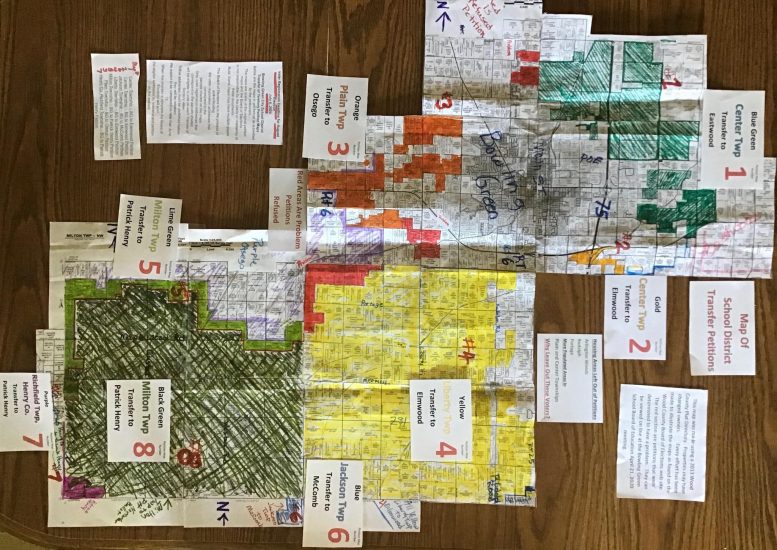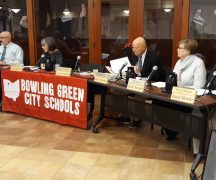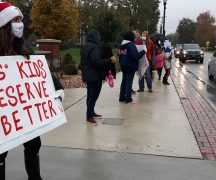By JAN LARSON McLAUGHLIN
BG Independent News
Bowling Green City School District has long bemoaned the fact that the state funding formula for schools wrongly categorized the district as wealthy.
The property values in the school district per pupil put BG Schools among the districts that don’t need as much help from the state. But because much of those property values are in agricultural land, the actual revenue doesn’t jive with the state’s projections.
So now, with the district at risk of losing much of that agricultural land to five neighboring school districts, will the state reconsider BG School’s ranking among wealthy districts?
Not enough to make up for the loss in property taxes, according to David Conley, financial consultant for BG Schools.
If all of the areas petitioning for property transfers to other districts secede, the Bowling Green district will lose an estimated $5.6 million in property taxes, income taxes and pipeline taxes, Conley said.
“It is possible” that the state formula may result in more state funding for BG Schools if the petitioned areas secede, he said. However, there is no way a boost from the state will make up for the $5.6 million being lost – especially since the district may lose up to 220 students if the properties are transferred, Conley added.
“The district might get more operating money from the state, and money for buildings. But the important word is ‘might,’” he said.
Bowling Green’s portion of state funding is also dependent on the per-pupil property value of other districts in Ohio. If other districts see changes in property values or enrollments, that in turn would affect Bowling Green School’s funding from the state.
“It’s not guaranteed,” Conley said.
Further complicating the issue is the fact that the funding formula used by the state is currently frozen so it can undergo a review of the entire school funding system in Ohio.
Then there is also the impact of COVID-19 on the state’s finances, Conley added.
“The state may not have money to give,” he said. “I don’t know, and no one does know.”
But even in the best case scenario, the state funding revisions won’t make up for the losses the district will face if the properties secede to other school districts, he said.
“It will be nowhere near the amount they would lose,” Conley said. “It will not be a break even.”
Even after the special election on Aug. 4, the fate of the petitioned properties and the Bowling Green district will be unresolved, he said. The ambiguous wording of the new law allowing property owners to petition to transfer to other school districts is open to multiple interpretations, according to Conley.
If the petitions pass, the new law states that the township trustees where the properties reside must enter into negotiations with the school districts involved to determine an equitable division of funds and indebtedness.
Conley said the poorly worded law will result in lawsuits.
“The territory transfer could be held up Lord knows how long,” he said. “The whole thing can come to a grinding halt.”
Conley interprets the wording to mean that landowners in the petitioned areas will continue to be responsible for bonds of the Bowling Green City Schools. And the district is currently seeking a law change that would require township residents seceding from the district to continue paying taxes to the BG school district for another decade.
“This thing is going to be litigated every which way from Sunday,” Conley predicted.
The following link shows maps and addresses of those areas on the ballot: https://www.co.wood.oh.us/BOE/2020_Aug%20Ballot%20Issues.html
Since there are no other issues on the Aug. 4 ballot, there will be just one polling location open in Wood County at the Bowling Green Church of the Nazarene, 1855 Gorrill Road, Bowling Green. Polls will be open from 6:30 a.m. to 7:30 p.m.





